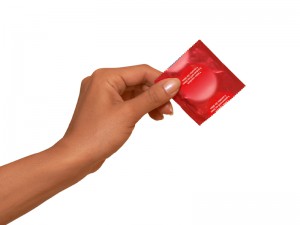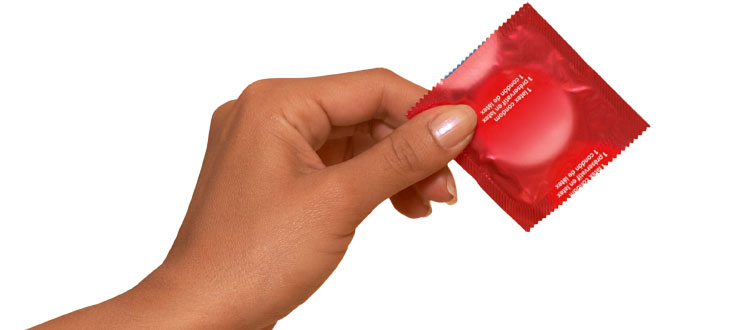Thinking of Condoms as a Feminine Care Product
 |
|
Sheila Hollender Women’s Environmental Health |
As a co-founder of Seventh Generation, I spent many years educating women on the benefits of using organic cotton tampons and pads. It was not easy to reach women with this new information, since so many women become attached to a favorite tampon or pad and are brand-loyal.
Educating women on the products that are most intimate to them was a challenge. Today, many women understand that the ingredients that are used in the manufacturing of a product are not ingredients that they may want in their bodies. Tampons made from organic cotton do not contain pesticides, chlorinated bleaching compounds, dyes or fragrances – toxic ingredients that have no place in our bodies. The Campaign For Safe Cosmetics speaks about cumulative exposure in feminine care products.
My attention has now turned to condoms and the manufacturing process which they undergo. Since 42% of American women buy condoms, it’s time for them to make informed decisions about what kind of condom they are buying.
On July 16, 2012, the Chemical and Veterinary Investigation Institute in Stuttgart, Germany warned that most condoms on the market contain a cancer-causing chemical. The Institute found the carcinogen N-Nitrosamine in 29 of 32 types of condoms it tested in simulated conditions.

In the tests, the condoms exuded huge amounts of cancer-causing N-Nitrosamine from its rubber coating. Researchers measured amounts of N-Nitrosamine, using the same methodology that is prescribed for other rubber products such as baby pacifiers.
“N-Nitrosamine is one of the most carcinogenic substances,” the study’s authors said. “There is a pressing need for manufacturers to tackle this problem.” When the rubber material comes in contact with human bodily fluids, it can release traces of N-Nitrosamine.
Germany’s Federal Institute for Risk Assessment said that daily condom use exposed users to N-Nitrosamine levels up to three times higher than levels naturally present in food. Werner Altkofer, head of the Stuttgart-based Chemical and Veterinary Investigation Institute, said that though the production of rubber usually uses chemicals that can exude N-Nitrosamine, condom manufacturers could bypass it by using more expensive alternative substances available on the market that didn’t form the carcinogen.
There are three types of nitrosamine typically found in condoms:
- NDMA – N-nitrosodimethylamine
- NDEA – N-nitrosodiethylamine
- NDBA – N-nitrosobutylamine
Of these, NDMA is of most concern. The following quote from the International Agency for Research on Cancer (IARC) summarizes the current situation: “There is sufficient evidence of a carcinogenic effect of N-nitrosodimethylamine in many experimental animal species. Similarities in its metabolism by human and rodent tissues have been demonstrated. Although no epidemiological data were available (and efforts should be directed toward this end), N-nitrosodimethylamine should be regarded for practical purposes as if it were carcinogenic to humans.”
Quite a few countries have nitrosamine limits for the rubber nipples used on baby bottle. The most stringent is the Netherlands with a limit of 1 ppb followed by Denmark at 5 parts per billion (ppb.) Several countries have a limit of 10 ppb for total extractable nitrosamines. These include Germany and Switzerland. Canada, the UK and the USA have limits of 10 ppb for each nitrosamine together with higher limits for the total of all nitrosamines.
It’s time to look for condoms that are manufactured in a way that avoids the formation of toxic chemicals. Of course, the use of condoms is mandatory to prevent pregnancy and STDs, as well as the HIV virus, and we recommend their use – but we need better options.
There is good news on the horizon, though. A new brand of latex condoms are in production and will be available by the beginning of 2014. Sustain Condoms are being introduced as a fair trade, sustainably manufactured, non-toxic condom that have been independently tested to ensure that there are no detectable nitrosamines. Look for them soon at sustaincondoms.com.




Thank you, Sheila for your well written article.
Do you have any information on non-latex, namely: synthetic or lambskin condoms?
Thanks for your research, Sheila! I wonder if there is any investigation on the safe-sex use of ‘dental dams.’ As lesbian health is often overlooked, I wonder if there is research on the chemicals in the objects. If toxic, I imagine there is not yet a campaign to develop non-toxic versions..
Hi Julie and Catherine!
You raise some good points. Lesbian health is often overlooked, but there are some non-toxic dental dam providers out there. WVE doesn’t endorse any products (I’m their communications contractor), but a Google search revealed a company called Hot Dam that makes non-latex dental dams, and I also came across one called Insti-Dam by Zirc. Hope that helps!
Here’s an article about non-latex condoms: http://goaskalice.columbia.edu/allergic-latex-and-polyurethane-other-condom-options. Just remember than lambskin ones don’t protect against STIs!